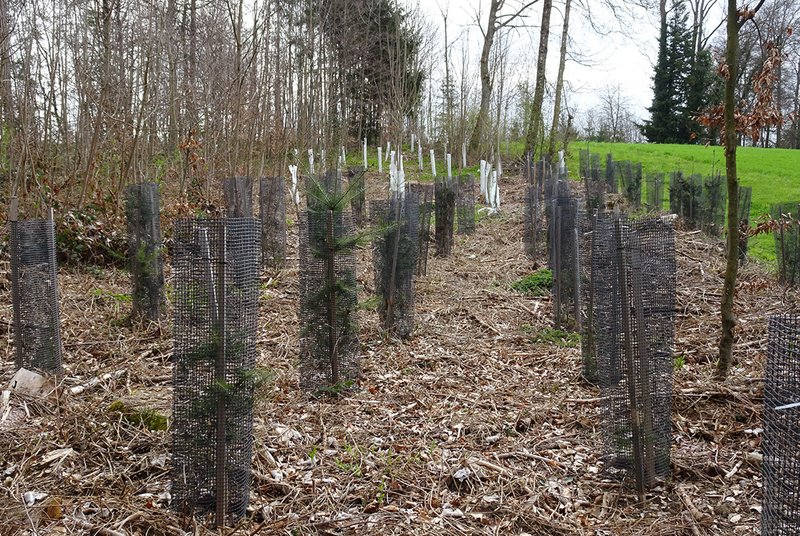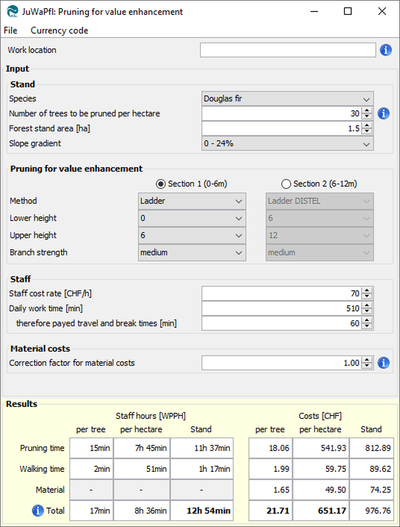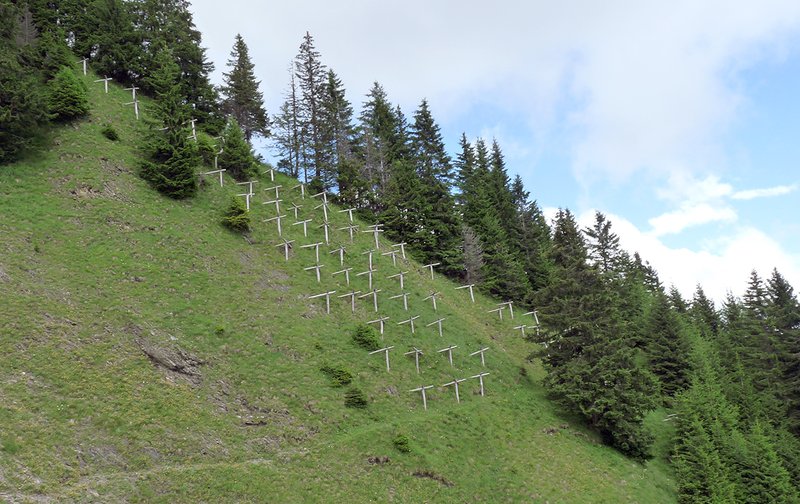In forestry, there are two distinct stages of production: The first stage of production includes stand establishment, tending of the young stands, forest protection, game damage prevention and the disposal of logging residues. The second stage of production includes timber harvesting, timber measurement, timber protection and timber transport.
To complement the existing HeProMo timber harvesting productivity models, the WSL research institute has developed productivity models for the following measures conducted at the first stage of production:
- Planting
- Pruning for value enhancement
- Selective thinning
- Spot mowing around young trees
- Protection against browsing damage
- Measures to prevent snow gliding
- Creation of access trails
- Planning of the skid trail
The models were selected on the basis of a survey carried out in 2018 among all district foresters and district forestry managers in Switzerland. These could decide which measures at the first-stage of production were important for forestry operators and should be supported by the establishment of bases for calculation. The software JuWaPfl (from the German “Jungwaldpflege” for “tending of young stands”), which contains all seven productivity models, allows the time required, productivity and costs of the different processes carried out at the first stage of production to be estimated or pre-calculated using a few key input variables.

Fig. 1: Plants protected individually against browsing. The costs of such measures can be estimated quickly using the new JuWaPfL software. Photo: Fritz Frutig, WSL
User interface
Figure 2 shows the graphical user interface, using the pruning model as an example. The user interfaces of all models are basically set out in a similar way. The respective input parameters are entered in the grey boxes or selected from the drop-down menus. The resulting times and costs for the respective important positions and the totals appear in the lower section with the yellow background. The times and costs are usually shown per unit (tree, structure, etc.), as well as per area. If an input variable is changed, the results are automatically updated. This allows the influence of a particular input variable on the times and costs to be checked easily and quickly.
The basic document for the respective model can be found as a pdf file at the top of the user interface, under “File”. It shows how the working processes have been defined, what data the model is based on, how the model is structured, and what its specific area of application is. In the same place it is also possible to create a data sheet in pdf form giving all input values and results. A cost estimate can thus be archived in electronic form or printed out. Under “Currency unit”, the currency units of the input and output fields can be changed from CHF to EUR. If required, it is possible to include further units of currency.
Blue information buttons have been inserted for those input fields where ambiguities could arise. Behind these there is a text field with explanations. These information buttons are also used in some places to explain correlations in the model, in order to make it easier for the user to use the calculation model.
Areas of application
The primary users of the models will be the forestry companies. With this software, forestry practitioners have a reliable source enabling them to compare the resources they have used at the first stage of production with reference data. In training and education, for example, the tool can be used to show clearly which processes are costly at the first stage of production, and which factors have most influence on the costs. The software can also be used to compare working methods as a basis for operational decisions. The tool will also provide the federal and cantonal administrations in Switzerland with useful information for the determination and revision of subsidy rates and the calculation of expenditure in the context of forest value assessments and similar applications.
Finally, JuWaPfl provides a further basis for scientific applications. The timber harvesting productivity models (HeProMo) are for example used in the national forest inventory to calculate the time and costs involved in timber harvesting. The new JuWaPfl models could provide a valuable basis for quantitative analyses of the first stage of production.
Outlook
In the course of the project, it became apparent that it would be useful to add calculation models for further working methods. One example here would be the game protection model, in which the plastic sheath for the protection of individual trees could be included. This method has become more widespread in forestry operations in recent years.
Download (new version 2024)
Productivity models for tending young stands: JuWaPfl.jar (18 MB). If you have problems with downloading, please use the zip file: JuWaPfl.zip (18 MB). This contains the jar file. The software does not require installation. It runs on both Windows and Apple systems. Double-click on the jar file to start it directly, without installation. You must have a current Java version installed on your computer.
Windows users: If the application does not start when you double-click on JuWaPfl.jar, even though Java is installed on the computer, you can download the file JuWaPfl.exe and copy it into the same directory as JuWaPfl.jar and then start JuWaPfl by double-clicking on JuWaPfl.exe.
Translation: Tessa Feller



